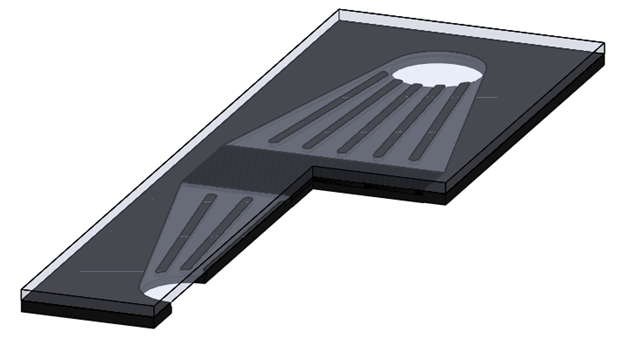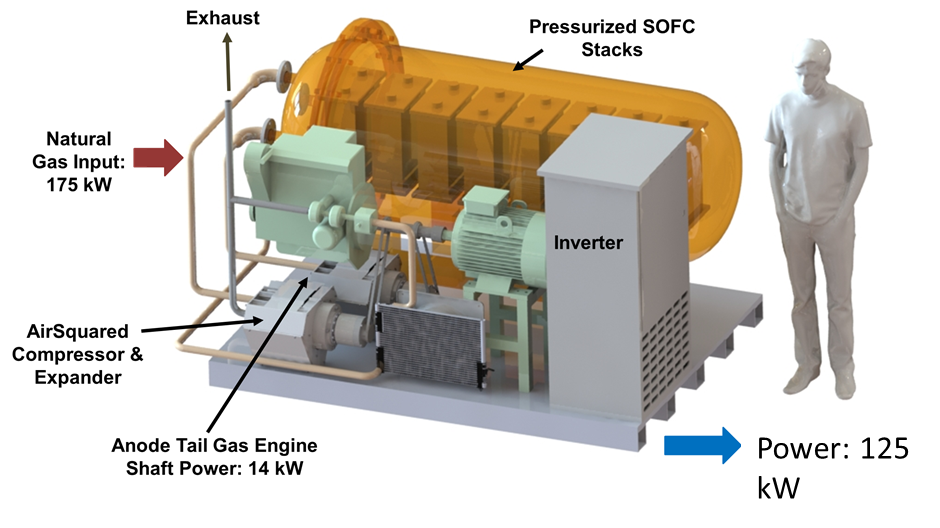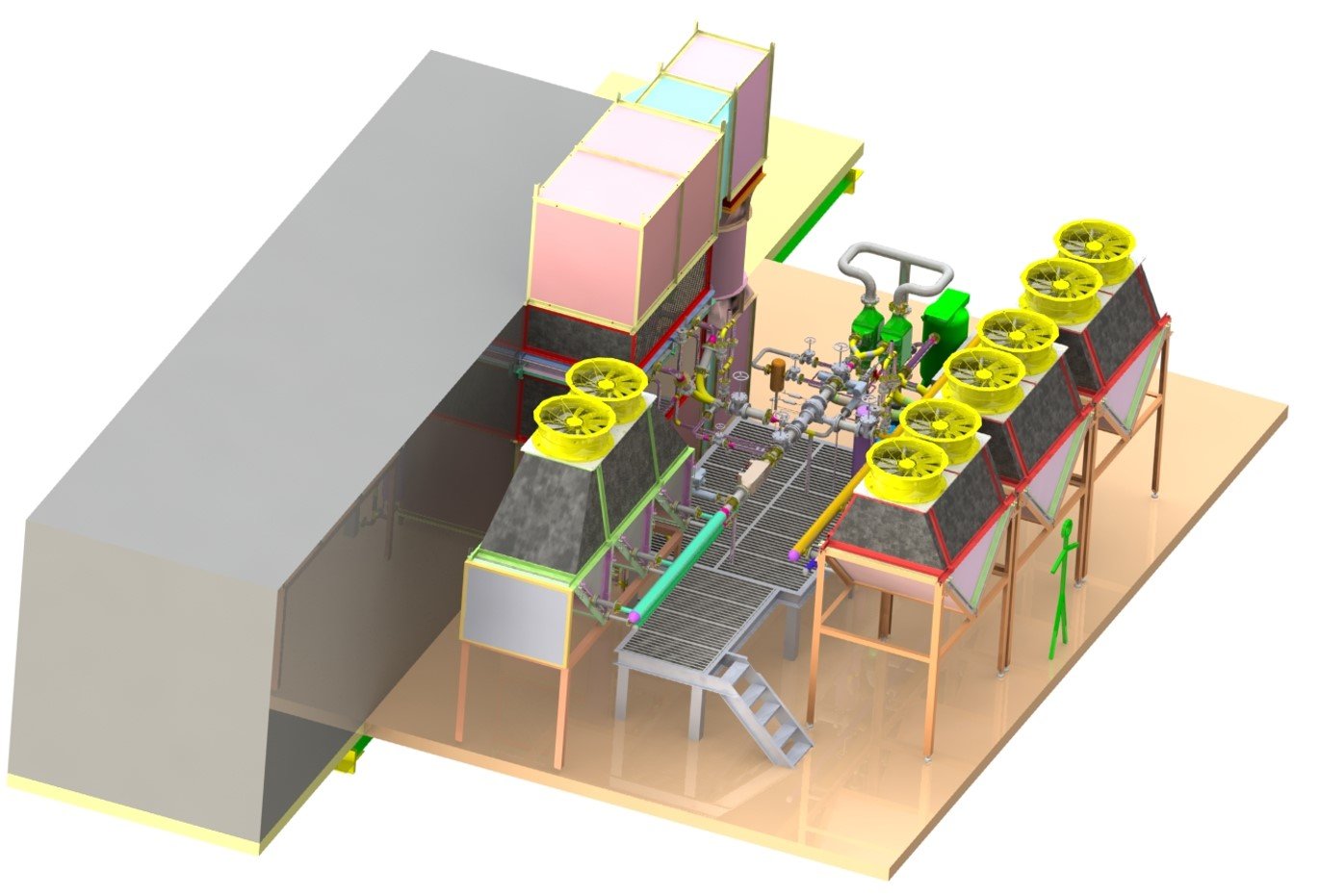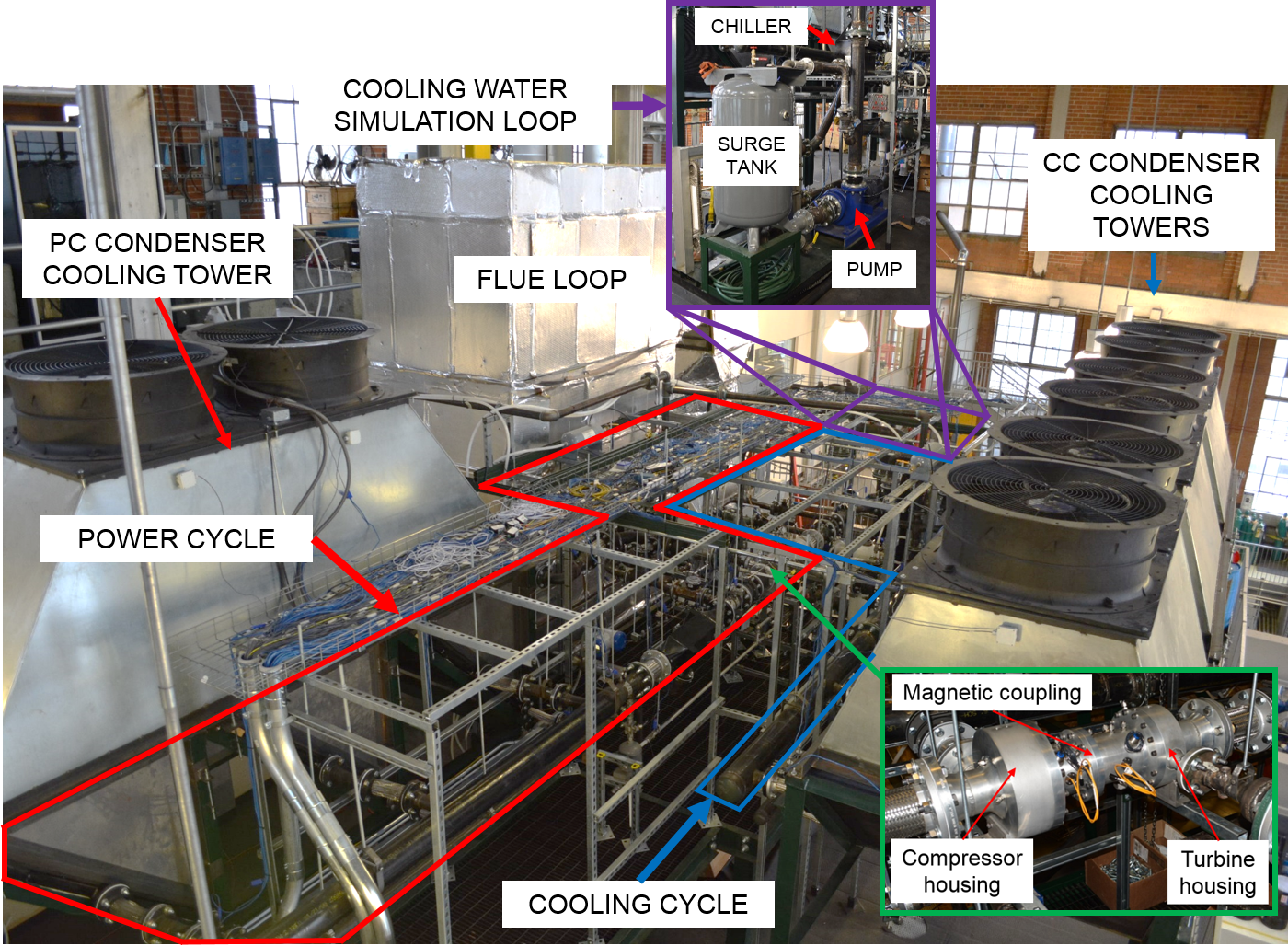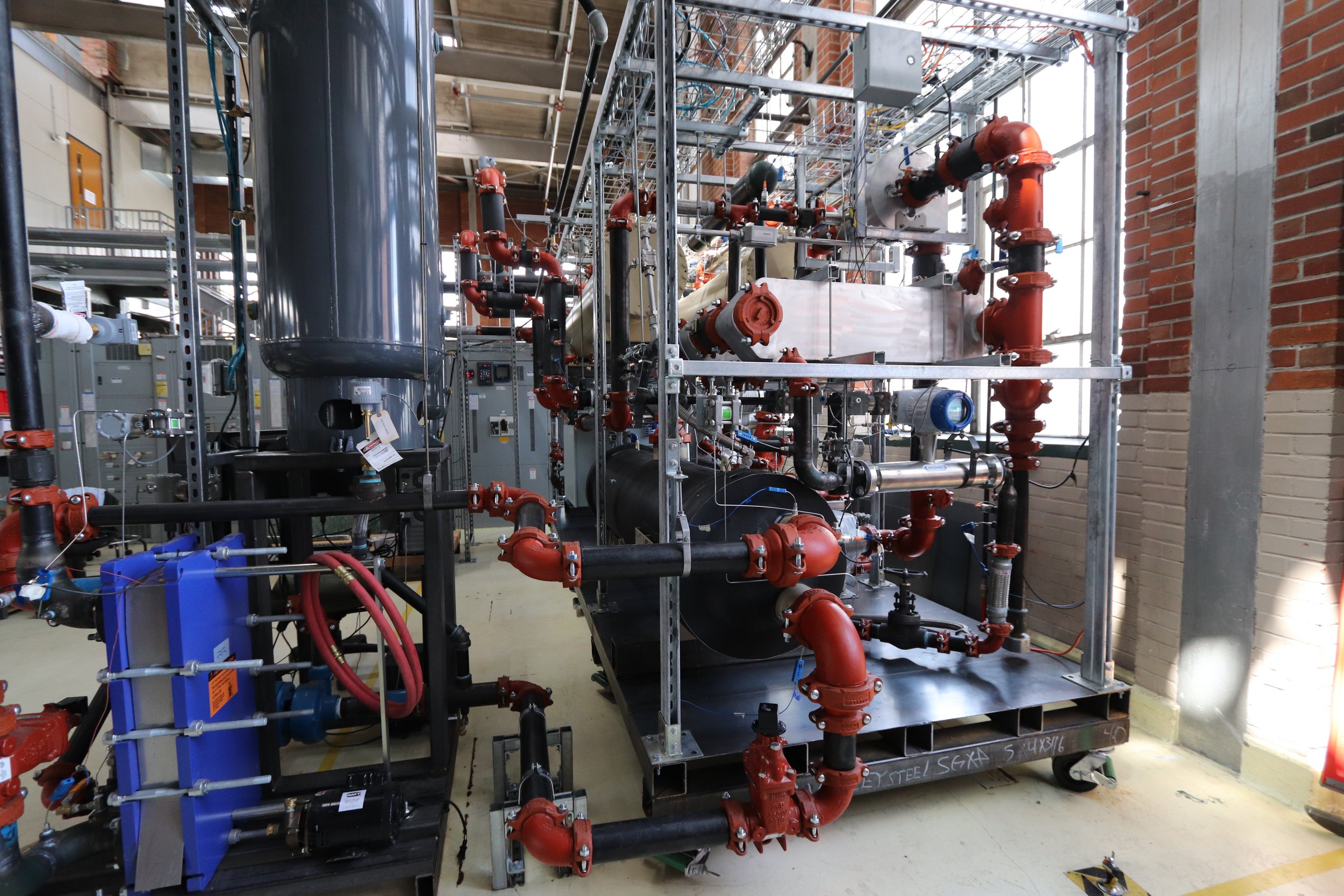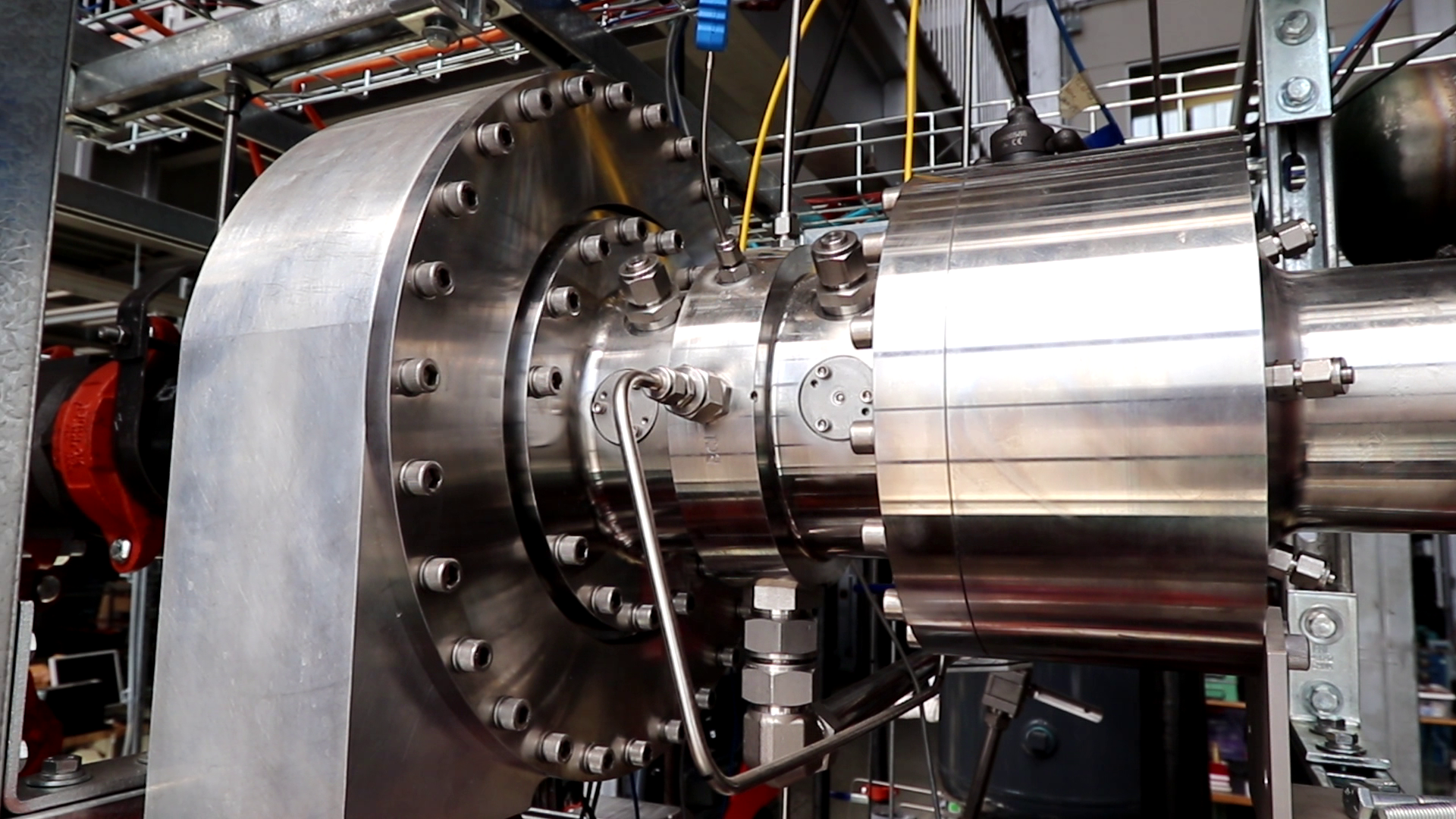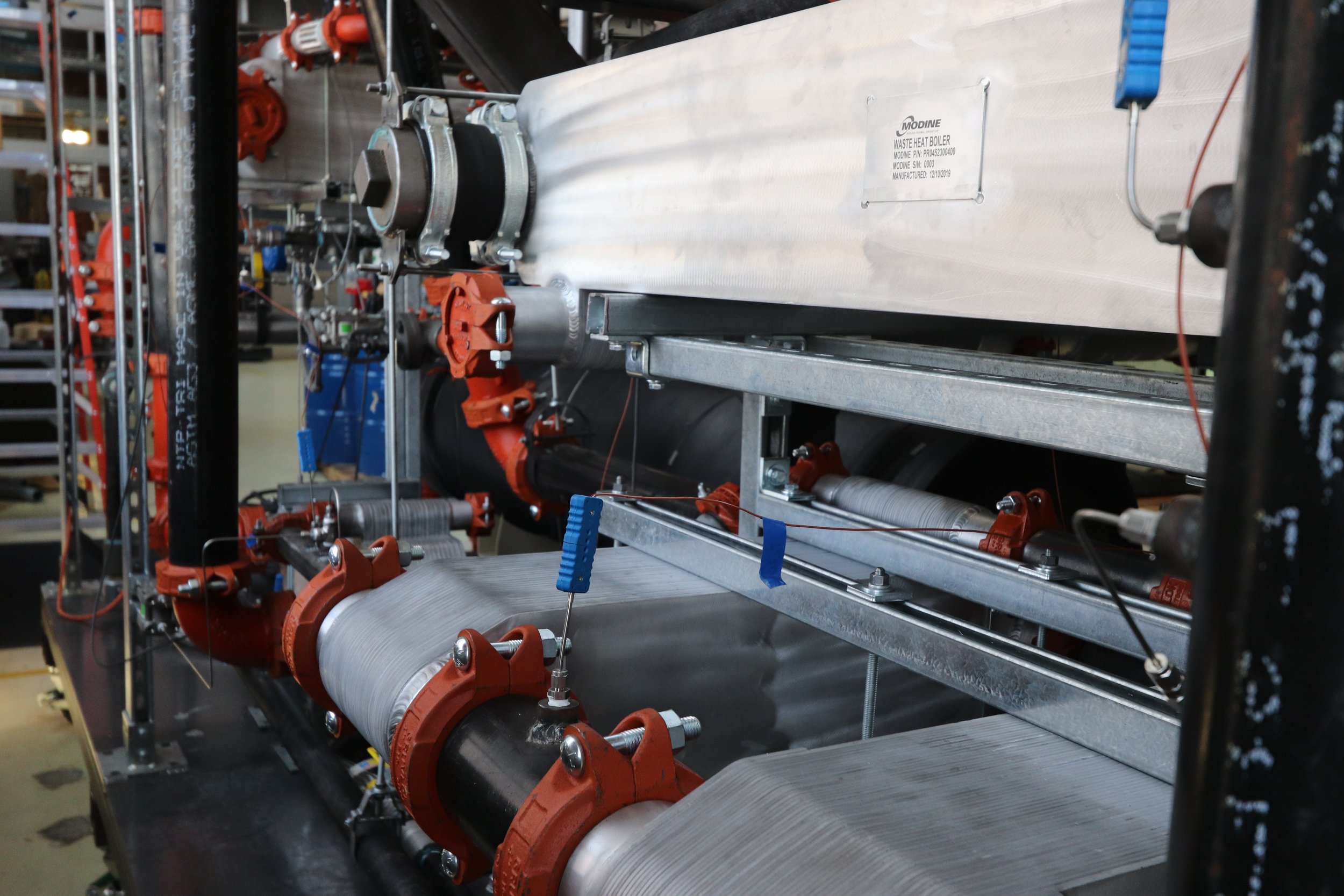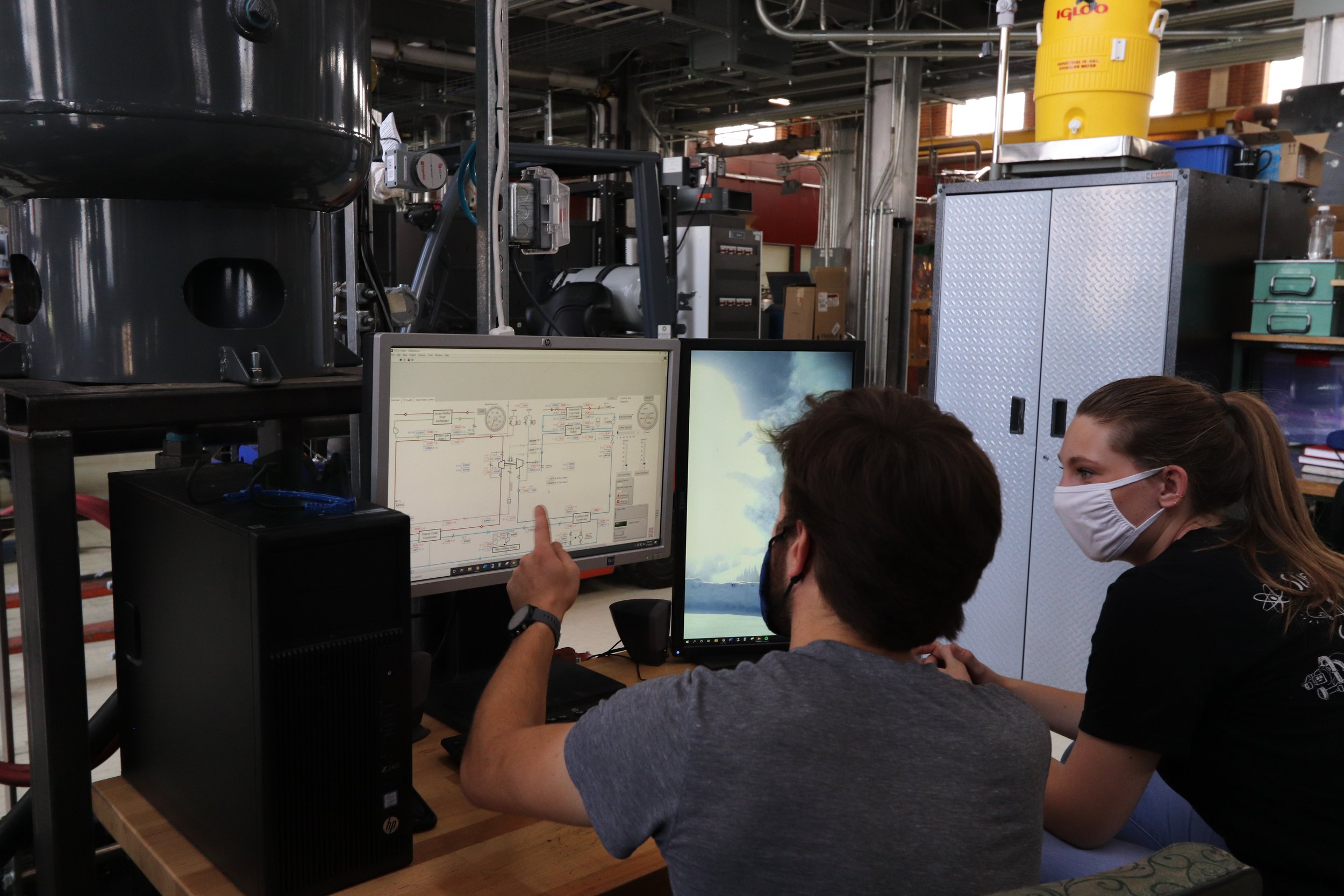Research Overview
Current Research
Turbo-Compression Cooling System (TCCS)
Derek Young, Ben Platt, Nick Roberts PAST: ACHYUT PAUDEL, TORBEN GRUMSTRUP, SHANE GARLAND, JOHN SIMON, ALEX GRAUBERGER Partners: Modine, Barber-Nichols
In thermoelectric power generation, only about 40% of the energy in the fuel is converted into electricity. The remainder of the fuel energy is converted to low-grade waste heat that must be rejected to maintain the power plant's efficiency. Typically, power plants use water from nearby rivers, lakes, or the ocean for cooling. In areas with limited water or under drought conditions, dry-cooling systems use air to remove heat from the plant's condenser water. However, present dry-cooling technology reduces the power plant's efficiency and requires costly equipment. With increasingly strained water supplies, economical dry-cooling approaches that do not reduce the efficiency of power plans are critically needed. To address this challenge, the REACH CoLab was funded through the ARPA-e ARID program to develop and test a thermally activated cooling system for thermoelectric power plants to enable dry cooling. The technology utilized a transformational turbo-compressor and low-cost, high-performance heat exchangers that are currently mass produced in the HVAC industry. To operate, low-grade waste heat from the power plant combustion exhaust gases, or flue gas, was captured and used to power a highly efficient turbo-compression cooling system. A 300 kWth cooling scale experimental facility was built and tested which validated initial performance hypotheses on the high effectiveness, compact heat exchangers and the extremely high efficiency turbomachinery.
Following the conclusion of the ARPA-e project, the team was awarded follow-on funding from the DOE Advanced Manufacturing Office (AMO) to build a second turbo-compression cooling system to recover waste heat from diesel generator engine coolant (91C) and provide chilled water at industry standard temperatures (7C) using fully liquid-coupled heat exchangers. The REACH CoLab once again engaged Barber-Nichols, Inc. and Modine Manufacturing Co. to partner on this project. Barber-Nichols, Inc. built a 52 kW turbo-compressor that was directly coupled, where the turbine and compressor shared a single shaft (similar concept to an automotive turbocharger – but much larger). Modine Manufacturing fabricated 8 large-format aluminum brazed plate-fin heat exchangers with extremely low pressure drop and high effectiveness. As part of this project, the team installed a 2 MW hybrid evaporative cooling tower to reject condenser heat and relocated a 500 kW steam boiler. Initial testing has been promising – the test facility can operate extremely steadily, a heat to cooling COP of 0.56 has been achieved at the design conditions, and high turbomachinery efficiencies have been demonstrated.
Thermal Management of High Heat Flux Electronics
CALEB ANDERSON, Nicole Cassada PAST: TORBEN GRUMSTRUP, TAYLOR BEVIs, BRYAN BURK, JENSEN HOKE, JOSH RICHEY Partners: Lawrence Livermore National Laboratory (LLNL), Office of Naval Research (ONR), DEVCOM Army Research Laboratory (ARL), Air Force Research Laboratory (AFRL)
As electronics trend towards increased miniaturization and greater performance, the need for high-performance cooling of becomes critical. The resulting heat fluxes become extremely high and require more complex cooling techniques. Heat generated by high power density devices such as laser diode bars and arrays, power electronics, and other semiconductor switching electronics must be efficiently removed from the device to enable optimal functionality and avoid catastrophic overheating. Microchannel heat exchangers are an attractive solution to this problem. This style of device utilize advanced micromachining techniques to fabricate low thermal resistance cold plates with small hydraulic diameter and large aspect ratio channels. Microchannel cold plates operating under two-phase flow boiling conditions (microchannel evaporators) are an attractive thermal management strategy for cooling high heat fluxes (>1 kW/cm-2) with nearly isothermal flow conditions and at lower pumping powers compared to single-phase cooling solutions. However, two-phase flow is complex and is susceptible to a variety of flow instabilities.
A previous partnership with Lawrence Livermore National Lab (LLNL) developed low thermal resistance microchannel ( µm) evaporators out of thin (0.3 – 0.5 mm) silicon wafers using a deep reactive ion etching technique. The goal of the project was to improve the optical power density of laser diode arrays by employing microchannel evaporators to increase the output power of the devices and reduce the pitch between adjacent bars in an array. The devices have a 1 mm x 10 mm platinum strip heater on the backside which acts as a surrogate laser diode bar. A custom two-phase pumped refrigerant loop was built to test these microchannel cold plates under two-phase cooling with R134a. Experiments have shown that up to 150 W and 1.5 kW/cm2 can be successfully dissipated with these devices, depending on channel and fin geometries and fluid conditions. The data collected in this work was used to valid microchannel heat transfer models. Accurate modeling of microchannel evaporator performance is necessary to predict and design practical devices using this thermal management technique. A finite element analysis (FEA) conjugate heat transfer model was created in COMSOL Multiphysics to compare the predictions of a variety of two-phase heat transfer correlations with the experimental results. The model coupled two-phase pressure-drop calculations from literature correlations with locally calculated fluid properties and locally applied heat transfer coefficients as calculated from the heat transfer correlations.
Following the conclusion of the LLNL project, the team received funding from the Office of Naval Research (ONR) to assist the DEVCOM Army Research Lab (ARL) and Air Force Research Lab (AFRL) on a large-scale collaborative effort. The goal of the project was to improve the Size, Weight, and Performance (SWaP) of pulsed-power systems operating with two-phase thermal management systems by implementing a variety of controls, modeling, and improved implementation strategies. One of the evaporators which was previously tested under steady state conditions was tested under transient heat loads. During the transient heat load testing, vapor backflow (as shown in the white dotted traces) at the onset of boiling was unexpectedly observed despite the presence of the stabilizing inlet restrictions due to the large wall superheat temperatures above the local fluid temperature. These flow instabilities and temperature overshoots could be seriously detrimental to a real device operating under transient heat loads with such an evaporator. Thus, research into developing a predictive model and a means of reducing the peak temperatures and vapor backflow is currently ongoing.
A new project funded by LLNL is currently underway towards improving the performance and optical power density of laser diode arrays with a novel microchannel cooling architecture. A scanning electron microscopy image shows a sample of the large aspect ratio microchannels which can be fabricated for the current research. Since laser diode arrays function with large power densities and are closely packed together, the resulting heat fluxes are typically in excess of 1 kW/cm2 and benefit from the highly efficient cooling mechanisms of microchannel cold plates.
Hybrid Fuel Cell-IC Engine
Shane Garland, Rustin Jensen Partners: Dan Olsen, Bret Windom, Colorado School of Mines, Kohler Power Systems, Air Squared
The unique and beneficial characteristics of solid oxide fuel cell (SOFC) technology hold much promise for their eventual widespread adoption in numerous commercial building applications. Nevertheless, cost and durability challenges remain that currently limit SOFC technology penetration in stationary energy applications. Under the ARPA-E INTEGRATE program, the Colorado School of Mines and its partners are developing a novel hybrid stationary power system comprised of an intermediate temperature (600°C), metal-supported solid oxide fuel cell stack integrated with a high efficiency stationary engine and novel balance-of-plant (BOP) equipment. In collaboration with Colorado State University, and Kohler Power Systems, the project aims to demonstrate a system that can generate power (125 kW) from natural gas at high electric efficiency (>70%-LHV), and low cost (<1000 $/kW). Project development activities on the hybrid SOFC/IC engine system development and requirements are presented and discussed, including modeling and experimental results from critical balance-of-plant equipment and techno-economic outlook.
Desalination of Hypersaline Brines
Brandi Grauberger Partners: Vanderbilt University, National Alliance for Water Innovation, Tiezheng Tong, Shihong Lin
As the world population increases, and water availability decreases through time, we are sure to see a decrease in the accessibility of water or people around the world. The 2018 United Nations World Water Development Report states that by 2050, over 6 million people could be living under water scarcity. Right now, over 2 billion people live under prolonged water stress, and at least 4 billion people live under water stress at least one month of the year. With the current population just under 8 billion people, these numbers are huge.
Water scarcity stems from two major branches. First, the amount of water available per capita decreases significantly as our populations grow. In arid regions, as climate change takes hold, the total water supply is expected to decrease as well, compounding the issue of limited water availability. However, the second issue of water scarcity is of higher concern. Ill management of our current water supplies has led to a significant decrease in the quality of water available for human use. The future of water depends on us to start creating new and reviving old water sources through water treatment.
This research is specifically focusing on the desalination of concentrated brines. These brines are generated throughout industry. They are a by-products of seawater desalination through reverse osmosis, beef and cheese processing, inland brackish water desalination, oil and natural gas extraction, and more. Our goal is to increase the amount of water recovered from water treatment technologies by further treating their wastewaters into a clean water source and dry salts through zero-liquid discharge.
Technologies that we study include membrane distillation, mechanical vapor compression, and electrodialysis. These three systems are able to remove more salt from brines that other desalination technologies, such as reverse osmosis which is pressure driven, because they are thermally and electrically driven. Unfortunately, these technologies are expensive to build and operate and are much less efficient in producing clean water. However, because these systems are thermally and electrically driven, we evaluate the potential of these systems to operate using low-grade thermal waste heat and renewable electricity for power.
This research evaluates the sustainability and the thermodynamic, procedural, and economic feasibility of new concentrated brine desalination technologies being implemented in today’s world.
Flexible Carbon Capture and Storage (FLECCS)
Ethan Markey, Joe Huyett Partners: ION Clean Energy, Storworks Power, Braden Limb
Fossil fuel-based power plants generate 80% of the United States’ electricity and provide a reliable generation source for both base and peak power demands. However, as environmental policies continue to be adopted these power plants will be required to use carbon capture and sequestration (CCS) which has a detrimental impact on the power plant’s performance. This impact originates from the large heat load required for carbon capture solvent regeneration which restricts the power plant’s power output and operation flexibility. Therefore, the goal of this research is to evaluate the feasibility of using thermal storage technologies in combination with natural gas combined cycle (NGCC) power plants and CCS to minimize the impact of solvent regeneration. Thermal storage is expected to minimize the impact of CCS on the power plant by providing the heat load required for solvent regeneration during times of peak demand which will allow the plant to operate unrestricted and at full power.
In total, sixteen unique thermal storage configurations are being evaluated from four thermal storage categories: Brayton cycle heat pump, vapor compression heat pump, resistive heating, heat recovery steam generator steam extraction for storage. The viability of these systems is being determined by evaluating each configuration on thousands of real-world Locational Marginal Pricing (LMP) profiles from the New York Independent System Operator and California Independent System Operator electricity markets using a 30-year discounted cash flow analysis. In order to perform this analysis, three interconnected models have been created: a thermodynamic model, an operation model, and an economics model. All models have been validated with external models to ensure model fidelity. The results of this analysis will be compared to the performance of a base power plant (NGCC with CCS and no thermal storage) to determine the impact of thermal storage on power plant performance. Initial results show that seven of the thermal storage configurations perform better than the base power plant over some of the LMP profiles evaluated. The best performing configuration was a vapor compression heat pump that used flue gas as the working fluid and had both hot and cold thermal storage units. This configuration performed better than the base power plant on 38.7% of the LMP profiles. These results show that thermal storage has the potential to mitigate the impact of carbon capture solvent regeneration on NGCC power plants in some scenarios.

